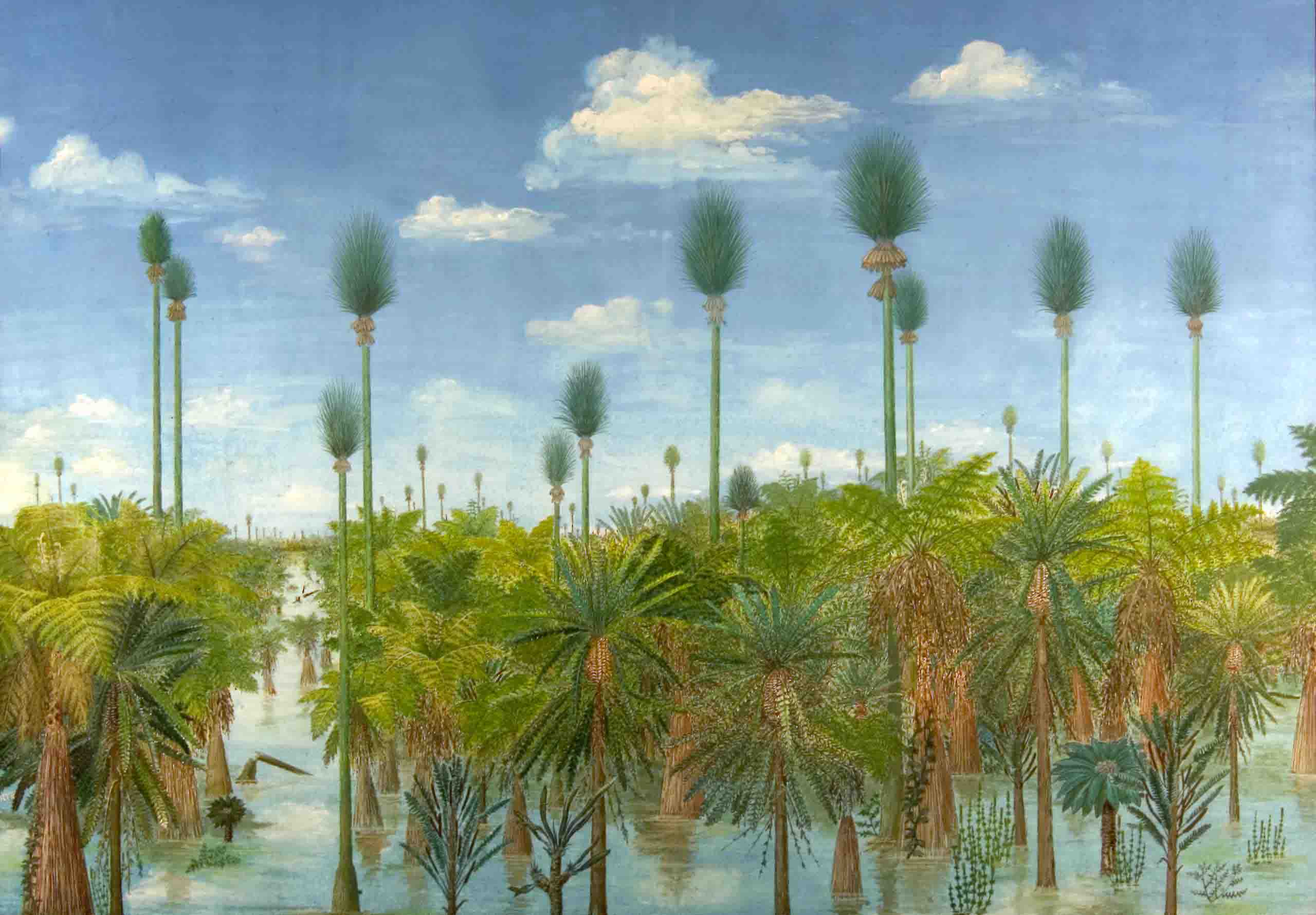
Reconstruction of actual site 3 of a peat-forming forest of earliest Permian age that was preserved by a volcanic ash-fall near Wuda, Inner Mongolia, China.
An ancient forest preserved in volcanic ash from Inner Mongolia, China provides us a fantastic window to see the vegetational community 298 million years ago. The study by WANG Jun from Nanjing Institute of Geology and Palaeontology, Chinese Academy of Sciences and colleagues discovered an Early Permian forest buried in volcanic ash and preserved in a way much like the Roman city of Pompeii.
The researchers were able to use the actual location of individual plants to reconstruct 1137 m2 of the forest, which is large enough for an investigation of the floral ecology. Six plant groups consist of the flora, with tree ferns forming a lower canopy and either Cordaites, a conifer, or Sigillaria, a lycopsid, appear as taller trees. Landscape heterogenity is apparent, including one site where Noeggerathiales, an extinct spore-bearing group of small trees, are dominant. The researchers also discovered significant differences in the distribution and ecology of ancient plants from what is now China and East Asia and those from what is now Europe and North America.
The preserved forest is from a period marked by oscillating climatic variations, and it is suggested that studying it would help researchers understand not just ancient ecosystems but also changes to modern global vegetation.
This work has been recently published in PNAS (Jun Wang, Hermann W. Pfefferkorn, Yi Zhang, and Zhuo Feng, Permian vegetational Pompeii from Inner Mongolia and its implications for landscape paleoecology and paleobiogeography of Cathaysia. PNAS 2012 ; published ahead of print February 21, 2012, doi:10.1073/pnas.1115076109) .

Reconstruction of the peat-forming forest of earliest Permian age preserved by a volcanic ash-fall that buried stems, broke off twigs, toppled trees, and preserved the forest at site 1 near Wuda, Inner Mongolia, China
